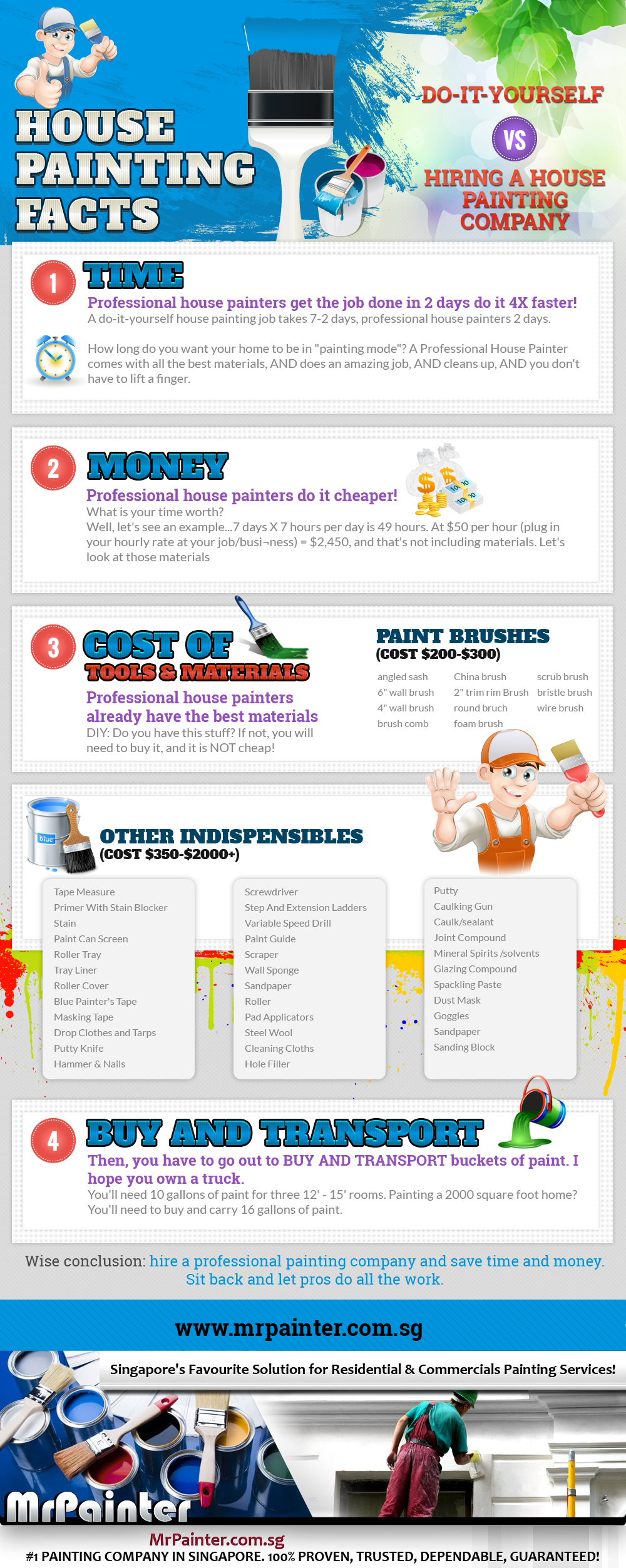Understanding Seasonal Influences On Commercial Outside Painting: Important Expertise For Success
Understanding Seasonal Influences On Commercial Outside Painting: Important Expertise For Success
Blog Article
Post Written By-Carlson Skafte
When you're planning an industrial exterior painting project, seasonal variables can make or break your results. You'll wish to take into consideration just how temperature level and moisture impact paint application and drying times. Selecting the right period can ensure your paint sticks correctly and lasts much longer. But which periods are genuinely the most effective for this sort of work? Let's check out the key elements that can impact your job's success.
The Impact of Temperature Level on Paint Application
When you're intending a business external paint task, the temperature level can significantly influence just how well the paint sticks and dries.
Preferably, you wish to paint when temperature levels vary between 50 ° F and 85 ° F. If it's also chilly, the paint may not heal correctly, causing concerns like peeling off or breaking.
On the flip side, if it's as well warm, the paint can dry too promptly, preventing correct attachment and resulting in an uneven finish.
You must also think about the time of day; early morning or late afternoon provides cooler temperatures, which can be much more positive.
Constantly inspect the maker's recommendations for the particular paint you're utilizing, as they usually provide assistance on the ideal temperature range for ideal outcomes.
Humidity and Its Impact on Drying Times
Temperature level isn't the only ecological element that influences your business external painting job; moisture plays a significant duty too. High humidity degrees can slow down drying times drastically, impacting the total top quality of your paint work.
When the air is saturated with moisture, the paint takes longer to treat, which can lead to issues like inadequate bond and a higher risk of mold development. If you're repainting on an especially moist day, be planned for extended wait times in between coats.
https://www.nytimes.com/2023/04/11/arts/design/mo-ostin-art-auction-sothebys.html to check regional weather and strategy accordingly. Ideally, aim for humidity levels between 40% and 70% for optimal drying out.
Maintaining these factors in mind ensures your job remains on track and provides a long lasting finish.
Best Seasons for Commercial Outside Painting Projects
What's the most effective time of year for your commercial exterior paint jobs?
Springtime and very early loss are generally your best bets. During these seasons, temperature levels are moderate, and moisture degrees are often lower, creating ideal problems for paint application and drying.
Avoid summertime's intense heat, which can cause paint to dry also promptly, bring about poor bond and coating. In a similar way, winter season's chilly temperatures can hinder proper drying out and treating, running the risk of the longevity of your paint job.
Go for days with temperature levels in between 50 ° F and 85 ° F for optimal results. Remember to inspect the neighborhood weather forecast for rain, as wet problems can destroy your project.
https://interiorpaintersnearme77546.blogpayz.com/34396717/essential-inquiries-to-present-before-engaging-house-painters around these aspects guarantees your paint job runs efficiently and lasts much longer.
Final thought
In conclusion, intending your commercial outside painting projects around seasonal factors to consider can make a substantial distinction in the outcome. By scheduling job throughout the excellent temperature levels and humidity levels, you'll guarantee much better attachment and drying times. baluster painter in mind to keep an eye on local weather forecasts and pick the correct time of year-- spring and very early fall are your best bets. Taking these steps will assist you accomplish a resilient and expert finish that lasts.
